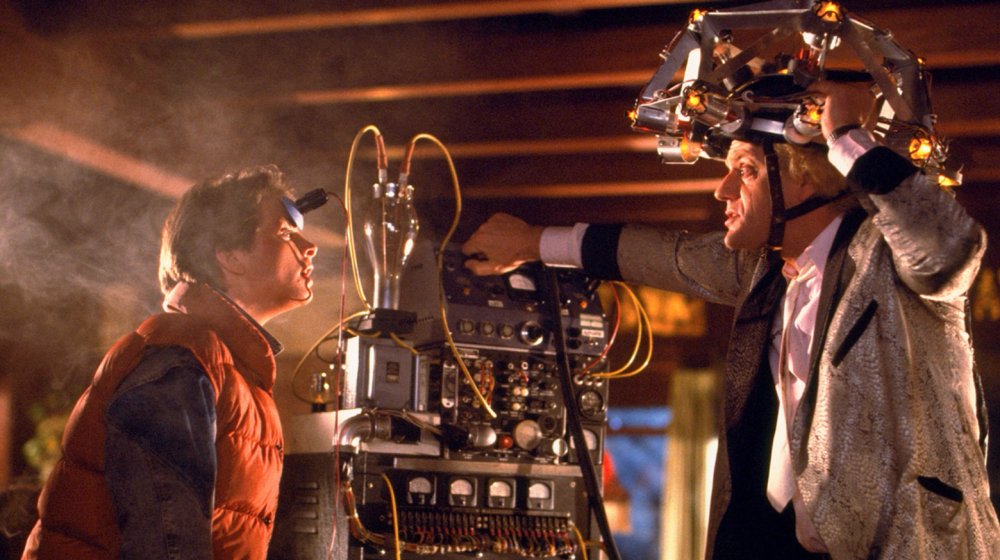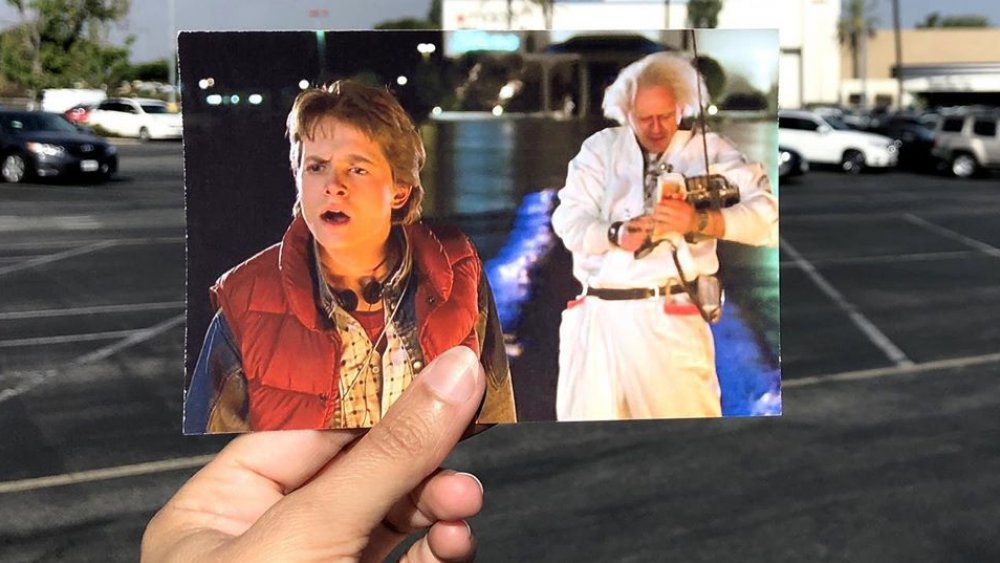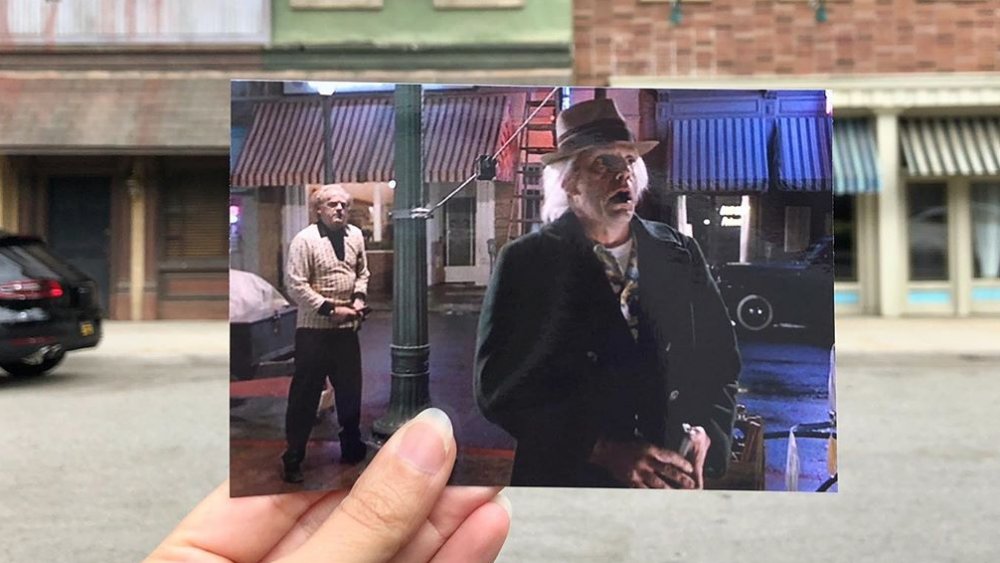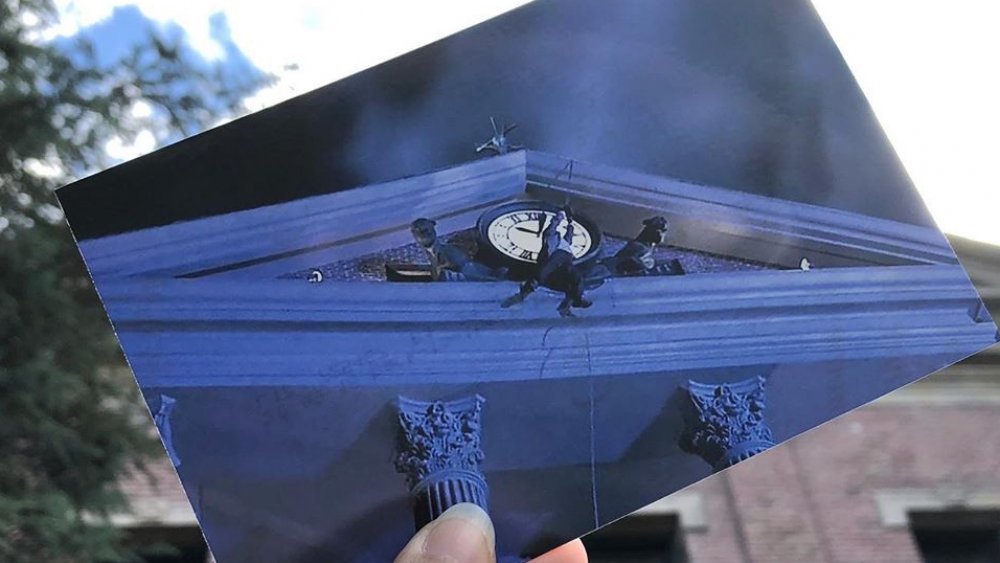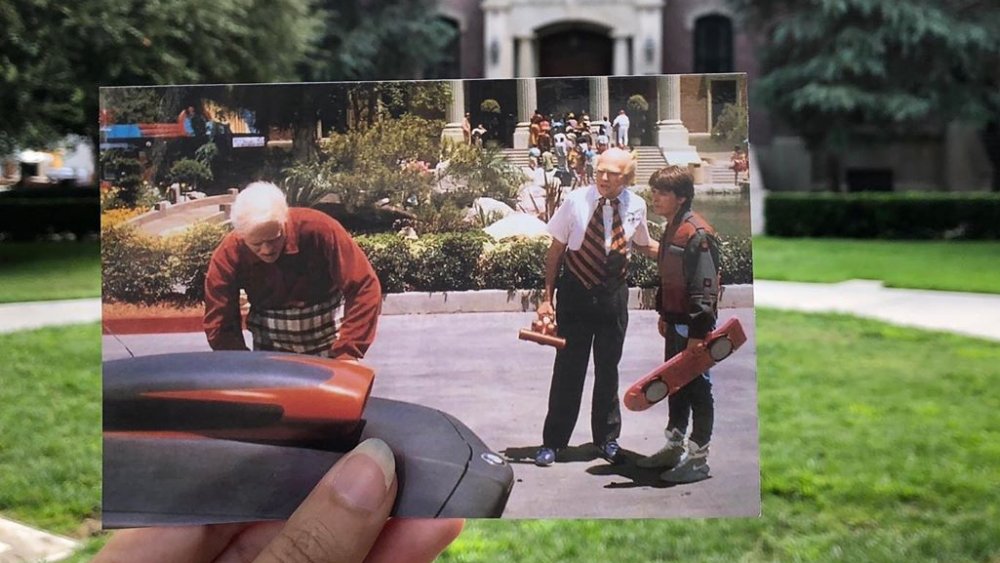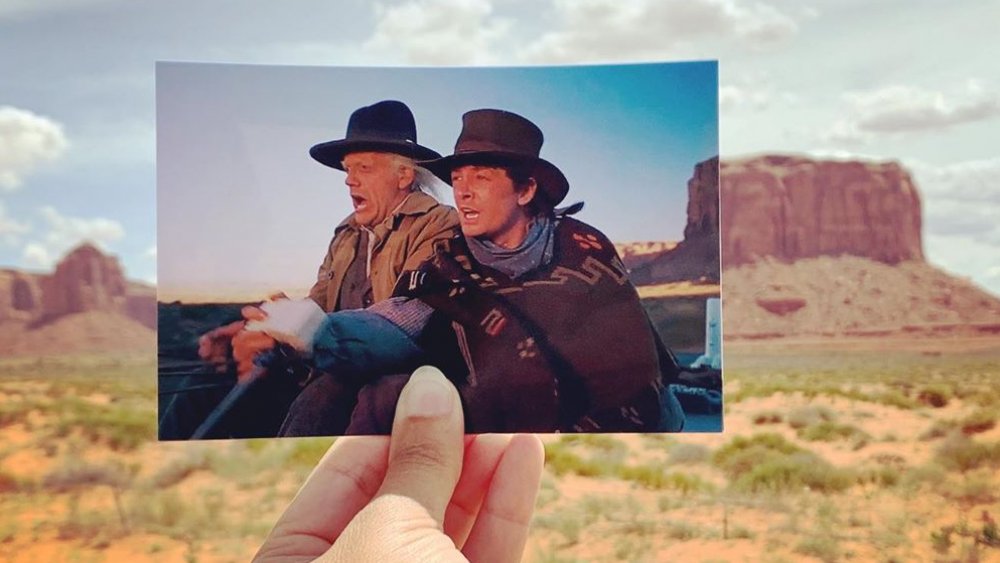What The Back To The Future Trilogy's Locations Look Like Today
Great Scott! It's been over 35 years since the release of the first Back To The Future film.
In the classic film, teenager Marty McFly travels back 30 years, from 1985 to 1955, and subsequently meets a younger version of his parents, his quirky scientist friend "Doc" Brown, and constant bully Biff. But even after three decades, the highest grossing film of 1985, and its two sequels, still hold strong with fans. To celebrate the 35 year anniversary, there's been a virtual cast reunion on YouTube (via Entertainment Weekly), fanart that reimagines the original film, and the recent release of the Back to the Future: The Ultimate Trilogy 35th anniversary set.
One fan, though, has accomplished a remarkable feat worthy of Doc Brown's famous catchphrase.
The official Back To The Future Trilogy Facebook page posted photos from photographer and BTTF trilogy super fan Andrea David. David's photos show the original locations of some of the most recognizable locations from the trilogy, to see how they look over three decades later.
When Marty discovered Doc invented a time machine at the Twin Pines Mall
This shot was from the famous scene when Doc reveals his "latest experiment" to Marty. After strapping his dog, Einstein, into a DeLorean, Doc remote controls the car to hit 88 mph. It suddenly vanishes, leaving a trail of flames behind, and leads Marty to think Doc "disintegrated Einstein." But doc reveals Einstein is just fine and that he actually just became the world's first time traveler.
The scene was set in the parking lot of the fictional Twin Pines mall. According to Futurepedia: the Back To The Future Wiki page, the actual mall was "Puente Hills Mall in the City of Industry, California in eastern Los Angeles County." The mall has apparently had "major renovation in recent years" and is "unrecognizable from how it looked in the movie." But the parking lot, today, has remained largely intact.
The Facebook comments on this particular picture are filled with stories of people who claim to have been there when the scene was filmed. "I was there at approximately 11 o'clock that night when they filmed the scenes at Twin Pine Mall," Facebook user Yvette M Tellez wrote. She continued, "This was shot at Puente Hill Mall and my mom and went to Tommy Burgers and then drove by and stopped to watch the filming from the top of the parking lot!"
When Doc Brown saw himself
One of Doc Brown's golden rules of time traveling is one he nearly broke in this scene: Never come face to face with a past or future version of yourself. According to him, it could "unravel the very fabric of the space-time continuum and destroy the entire universe!" Knowing this fact, Doc sees the 1955 version of himself and, keeping his back turned, helps his younger self with a "weather experiment," affirming there will be a storm that night that will help get Marty back to 1985.
The scene, from Back to the Future Part II, was set in 1955, in the fictional Hill Valley and filmed on the Universal backlot. It took place almost immediately before 1955 Doc would send Marty back. In the present day photo, of course, the 1950's looking car has been replaced by a more modern one. And sadly, there's no Christopher Lloyd in the current day picture either.
When lightning struck the clock tower
In this scene, we see the 1955 version of Doc Brown risk his life to get Marty back to 1985. Dangling from the clock tower, the eccentric inventor was trying to capture lightning during the infamous Hill Valley thunderstorm in order to channel 1.21 gigawatts of electricity into the DeLorean time machine's flux capacitor. The plan worked ... even though Doc almost died in the process.
The Hill Valley Courthouse and Clocktower from which Doc did his dangling was actually part of a set built on the Universal Studios backlot. Originally known as Mockingbird Square, after it appeared in the 1962 film, To Kill a Mockingbird, the location was renamed Courthouse Square (via TheStudioTour.com) and can actually be seen in a number of films including The Nutty Professor, Jingle All the Way, and Bruce Almighty.
The courthouse square is almost its own character, appearing in the every film of the trilogy along with the Back to the Future: The Animated Series, and the video games.
When Marty meets old Biff in Back to the Future Part II
Back To The Future Part II was memorable for many reasons: the dehydrated pizza, the predictions of how 2015 would look, and the almanac that created a dystopian alternate timeline where Biff owns Hill Valley and makes everything terrible. But one of the most memorable scenes in the film is captured in the photograph above. Echoing the first Back To The Future, when Marty was running from Biff in 1955 and inadvertently created the skateboard, the sequel Marty is on the run from Biff's grandson Griff, and uses a hoverboard to escape.
In the picture we can see Marty holding the hoverboard while a much older and worn down Biff stands near his grandson's car, the same one he's being paid to clean.
Another fun fact about this picture is the man wearing two ties is a character named Terry played by Charles Fleischer. Fleischer was the voice of Roger Rabbit in Who Framed Roger Rabbit, a film also starring Christopher Lloyd, directed by Robert Zemeckis.
This scene, once again, was filmed in the Courthouse Square.
When Doc and Marty arrive in the old west in Back to the Future Part III
This still includes an image from the final film in the trilogy: Back to the Future Part III. In this climactic chapter, Marty travels all the way back to 1885, to rescue Doc and bring him back to the future (hence the title fitting yet again!). Marty gets to live up to his name in this one, choosing the moniker of Clint Eastwood.
And if you're going to film a western, well, what better place to do so than Monument Valley? Used as the backdrop in the third and final Back To The Future film, Monument Valley has been featured in John Ford westerns including Stagecoach, She Wore a Yellow Ribbon, and The Searchers. Among the many small details placed throughout the trilogy, this film gave the filmmakers a chance to sneak in cameos that were homages to the western genre, as a whole. The three cowboys in the saloon, for example, are veteran Western actors Dub Taylor, Harry Carey Jr, and Pat Buttram.
